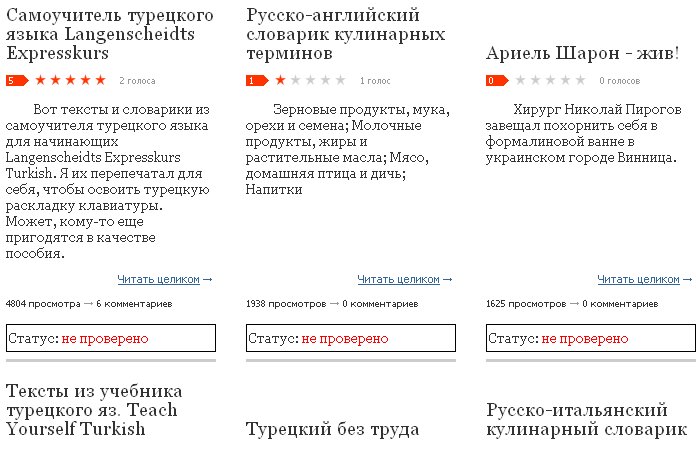Testi Psihologicheskie Pri Postuplenii V Mvd Cpd 566 Voprosov

Otchet o dezhurstve po shkole obrazec. 1 (1987) 526 A.2d 109 MARIO M. MEDICI, PLAINTIFF, AND MADISON PROPERTY COMPANY NO. 4, INTERVENOR-APPELLANT, v. BPR COMPANY, A LIMITED PARTNERSHIP, DEFENDANT-RESPONDENT, AND BOARD OF ADJUSTMENT OF SOUTH PLAINFIELD AND MAYOR AND COUNCIL OF THE BOROUGH OF SOUTH PLAINFIELD, DEFENDANTS. The Supreme Court of New Jersey.
-po-matematike-5-klass-vilenkin-566.html 2018-09-03T13:22:09+00:00 weekly. Annotate this Case. 1 (1987) 526 A.2d 109. The isolated reference to 'unique' suitability was intended to be synonomous with the test of 'particular suitability' endorsed by the Appellate Division. We reject petitioner's contention that Kohl v. Fair Lawn, supra, 50 N.J. At 279-80, requires proof of 'unique' rather.
Argued October 20, 1986. Decided June 3, 1987.
Bernstein argued the cause for appellant (Bernstein, Hoffman & Clark, attorneys; Daniel S. Bernstein and Suzanne T. Bogad, on the brief). Campanile argued the cause for respondent (Mandelbaum, Salsburg, Gold, Lazris, Discenza & Steinberg, attorneys). The opinion of the Court was delivered by STEIN, J. This case invites our reconsideration, for the first time since Kohl v.
Mayor of Fair Lawn, 50 N.J. 268 (1967), of the factors that should guide a municipal board of adjustment considering *4 a use-variance application for a commercial use that does not 'inherently serve[] the public good.' In this case the proposed use is a four-story motel, the fourth variance application to build a motel considered by the Board of Adjustment of South Plainfield (Board) in recent years.
This application, as well as the three prior applications, was granted by the Board. The Borough's zoning ordinance does not permit motels or hotels in any zoning district. We now reaffirm the holding in Kohl that if the use for which a variance is sought is not one that inherently serves the public good, the applicant must prove and the board must specifically find that the use promotes the general welfare because the proposed site is particularly suitable for the proposed use.[1] In addition, in view of the 1985 amendments to the Municipal Land Use Law (MLUL), N.J.S.A.
40:55D-1 to -112, set forth in N.J.S.A. 40:55D-89, -89.1 (requiring periodic review by the governing body of master plans and zoning ordinances and establishing a presumption of unreasonableness for ordinances not so reviewed) and N.J.S.A. 40:55D-70.1 (requiring annual reports by boards of adjustment of variance requests and recommendations for ordinance revisions), we deem it appropriate to require an enhanced quality of proof, as well as clear and specific findings by the board of adjustment, that the grant of a use variance is not inconsistent with the intent and purpose of the master plan and zoning ordinance. Such proofs and findings must satisfactorily reconcile the grant of a use variance with the ordinance's continued omission of the proposed use from those permitted in the zone, and thereby provide a more substantive basis for the typically conclusory determination that the variance 'will not substantially impair the intent and purpose of the zone plan and zoning ordinance.' This added requirement will apply in all *5 use-variance cases. We anticipate that its application will not significantly limit the use-variance mechanism, but will narrow to some extent the discretion of boards of adjustment in reviewing use-variance appeals for uses that are deliberately excluded by the governing body from those permitted by the zoning ordinance. It will also effectuate the legislature's apparent objective of encouraging municipalities to make zoning decisions by ordinance rather than by variance.

I BPR Company ('BPR' or 'Applicant'), a limited partnership, is the contract-purchaser of a U-shaped parcel of property consisting of almost nine acres, and located at the intersection of Hamilton Boulevard and South Clinton Avenue in the Borough of South Plainfield ('Borough' or 'South Plainfield'). The property is in close proximity to Route 287, an interstate highway that traverses the southerly portion of the Borough. The site is located in the Borough's M-3 industrial zone, the least restrictive of three industrial zones established by the Zoning Ordinance. In addition to the uses permitted in the two more restrictive zones, which include office buildings, scientific or research laboratories, various light-manufacturing uses, and storage yards, the M-3 zone permits a far wider variety of manufacturing uses than are allowed in the other industrial zoning districts. No zoning district within the Borough permits motels or hotels.